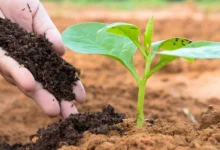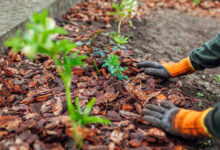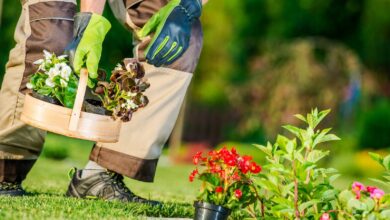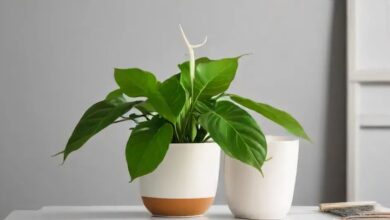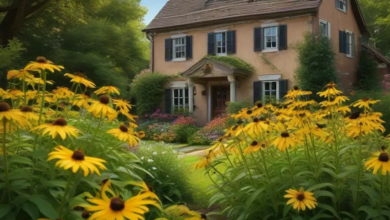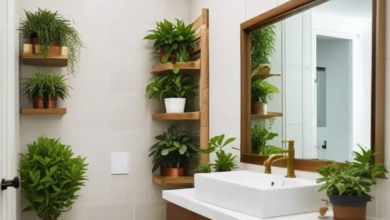Indoor Jungle How to Style Your Home with Plants
Transform your space into an indoor jungle! Learn how to style your home with plants using expert tips on placement, care, and design.
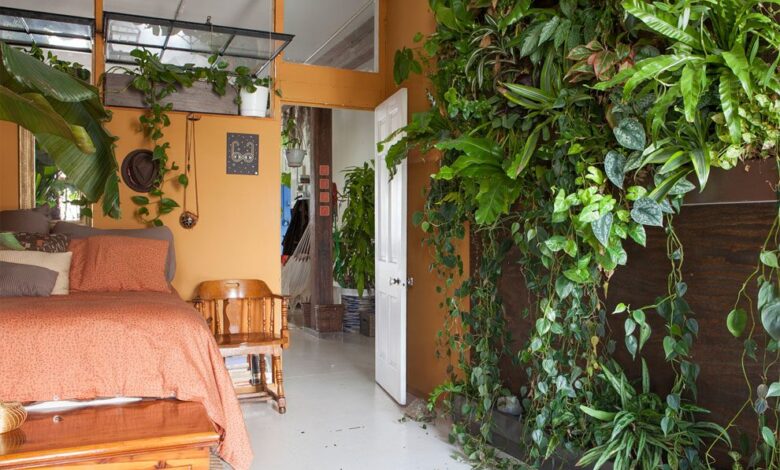
The concept of bringing nature indoors has evolved from a simple decorating trend to a lifestyle movement that’s transforming how we think about our living spaces. An indoor jungle isn’t just about placing a few potted plants around your home—it’s about creating a lush, breathing ecosystem that enhances your well-being, purifies your air, and turns your space into a botanical sanctuary. Whether you’re living in a compact apartment or a spacious house, learning how to style your home with plants can dramatically elevate your interior design while connecting you with nature in meaningful ways.
The popularity of indoor plant styling has skyrocketed in recent years, and for good reason. Studies show that houseplants reduce stress levels, improve air quality, and boost productivity. Beyond the health benefits, plants add texture, color, and life to any room, making them the perfect design element for both minimalist and maximalist aesthetics. From cascading pothos vines to towering fiddle leaf figs, the possibilities for creating your personal indoor jungle are virtually endless.
This comprehensive guide will walk you through everything you need to know about transforming your home into a plant paradise. You’ll discover which plants work best for different rooms, learn professional styling techniques, understand proper plant care, and get inspired by creative ideas that will help you cultivate the indoor jungle of your dreams. Whether you’re a seasoned plant parent or just beginning your botanical journey, these expert tips will empower you to create a stunning, thriving green space that reflects your personal style.
The Indoor Jungle Aesthetic
The indoor jungle aesthetic is characterized by abundant greenery, varied plant heights, diverse leaf textures, and a cohesive yet organic arrangement that mimics nature’s wild beauty. Unlike traditional home decorating that might feature one or two statement plants, the indoor jungle approach embraces maximalism, creating layered, immersive spaces where plants take center stage.
What Makes an Indoor Jungle
Creating an authentic indoor jungle requires more than just quantity—it demands strategic plant selection and thoughtful placement. The key elements include using plants of varying heights to create vertical interest, mixing different leaf shapes and sizes for visual texture, incorporating hanging plants to maximize space, and choosing complementary pot styles that enhance rather than distract from the greenery.
A true indoor jungle creates the feeling of stepping into a botanical garden while maintaining functionality as a living space. This balance between wild abundance and intentional design is what sets successful plant styling apart from simply owning many houseplants.
Choosing the Right Plants for Your Indoor Jungle
Selecting appropriate plants is the foundation of successfully learning how to style your home with plants. Your choices should reflect both your aesthetic preferences and practical considerations like light availability, humidity levels, and maintenance commitment.
Low-Maintenance Plants for Beginners
If you’re new to indoor plant styling, start with resilient varieties that forgive occasional neglect. Pothos (Epipremnum aureum) thrives in various light conditions and features beautiful trailing vines perfect for shelves and hanging baskets. Snake plants (Sansevieria) require minimal watering and tolerate low light, making them ideal for bedrooms and bathrooms. ZZ plants (Zamioculcas zamiifolia) are virtually indestructible, surviving weeks without water while maintaining their glossy, architectural leaves.
Spider plants are excellent air purifiers that produce charming offshoots you can propagate to expand your indoor jungle. Rubber plants offer dramatic, glossy foliage and grow quickly with minimal care, while cast iron plants live up to their name by tolerating neglect, low light, and temperature fluctuations.
Statement Plants for Visual Impact
Every indoor jungle needs focal points that draw the eye and anchor the space. Monstera deliciosa, with its iconic split leaves, has become synonymous with modern plant styling and can grow impressively large indoors. Fiddle leaf figs bring architectural drama with their violin-shaped leaves and tree-like structure, though they require more attention to light and watering schedules.
Bird of paradise plants create tropical ambiance with their paddle-shaped leaves and can reach ceiling height in the right conditions. Philodendrons offer incredible variety, from climbing varieties to self-heading types, all featuring lush, often heart-shaped foliage. Palms like the Areca or Parlor palm bring instant vacation vibes and help humidify your space naturally.
Trailing and Hanging Plants
Vertical space is crucial when creating an indoor jungle, and trailing plants are essential for achieving that cascading, lush effect. String of pearls offers unique spherical leaves that drape elegantly from hanging planters. English ivy provides classic beauty with its ability to trail or climb, adapting to your design needs.
Philodendron Brasil features stunning variegated leaves in green and yellow that brighten any corner. String of hearts produces delicate, heart-shaped leaves on thin stems that can grow several feet long. These trailing varieties help blur the boundaries between floor and ceiling, creating the immersive quality that defines a true indoor jungle.
Room-by-Room Plant Styling Guide
Learning how to style your home with plants means understanding how different spaces within your home have unique conditions and purposes that influence plant selection and placement.
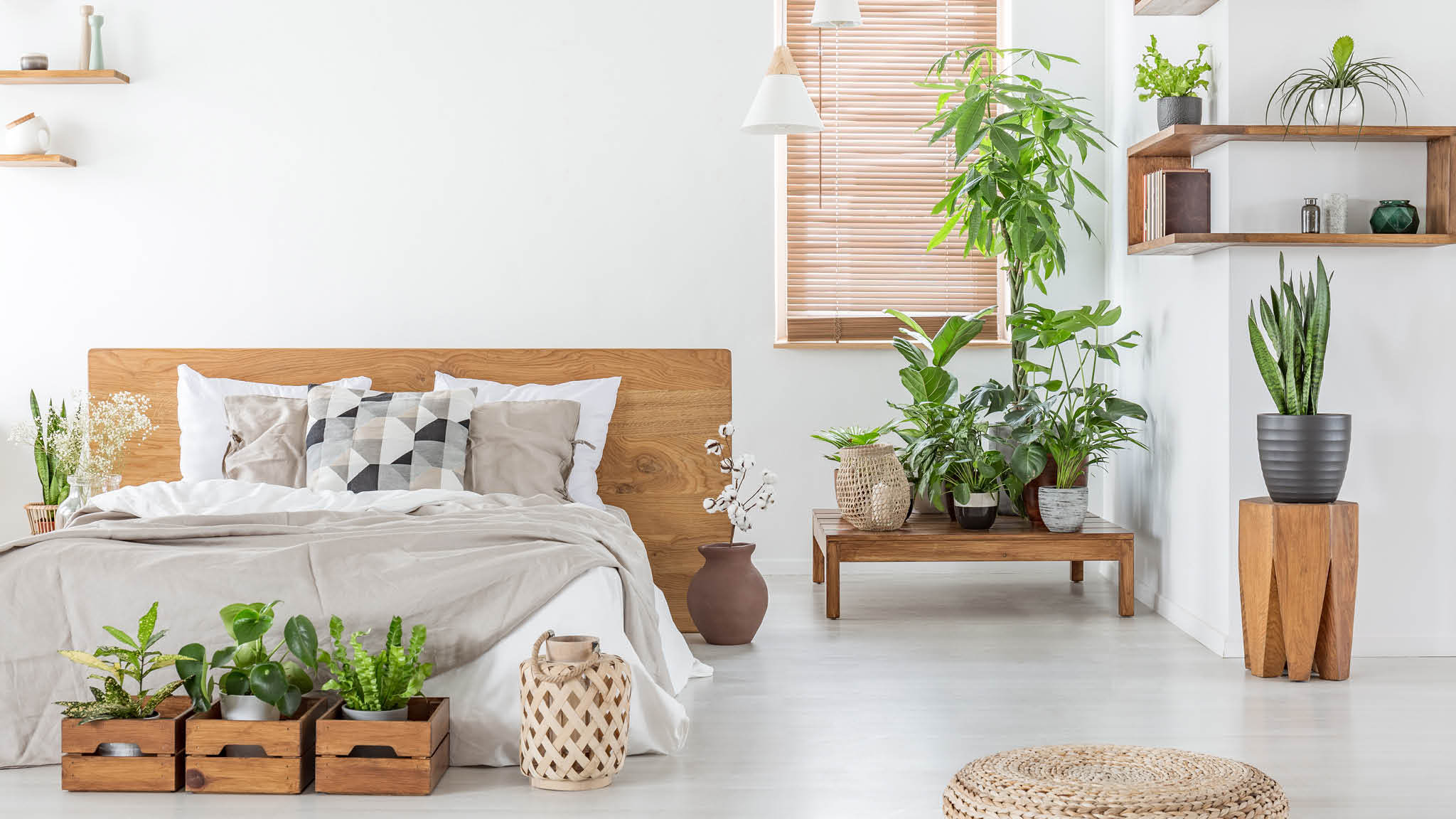
Living Room Indoor Jungle
The living room typically offers the most space and natural light, making it ideal for your most dramatic plant styling. Place a large Monstera or fiddle leaf fig in a bright corner as an anchor piece. Flank your sofa with matching plants on either side for symmetry, or create an asymmetric arrangement for a more organic feel.
Use floating shelves to display smaller plants at varying heights, creating visual layers throughout the room. A plant stand can elevate medium-sized plants to eye level, adding dimension. Consider placing trailing plants on top of bookshelves where they can cascade down, softening hard edges and adding movement to the space.
Group plants in odd numbers (three or five) on side tables or coffee tables for visual interest. Mix different pot materials—ceramic, terracotta, woven baskets—to add texture while maintaining a cohesive color palette that complements your existing decor.
Bedroom Plant Paradise
The bedroom benefits enormously from indoor plant styling since certain plants release oxygen at night, improving sleep quality. Snake plants are scientifically proven nighttime oxygen producers, making them perfect bedside companions. Place them on nightstands or in corners where their vertical lines add architectural interest.
Peace lilies thrive in the typically lower light of bedrooms and feature elegant white blooms alongside glossy green leaves. Pothos can drape from shelves above the bed or wind along curtain rods, creating a canopy effect. Keep the plant styling in bedrooms more restrained than other spaces to maintain the room’s calming, uncluttered atmosphere while still achieving that indoor jungle feel.
Avoid plants with strong fragrances in the bedroom, as these might disrupt sleep. Instead, focus on foliage plants that contribute to air quality without overwhelming the senses.
Kitchen and Dining Area Greening
Kitchens offer unique opportunities for indoor plant styling by combining beauty with functionality. Herb gardens on windowsills provide fresh ingredients while contributing to your indoor jungle. Basil, mint, rosemary, and thyme thrive in sunny kitchen windows and add delightful fragrances.
Hanging plants above kitchen islands or sink areas maximize vertical space without interfering with work surfaces. Pothos handles kitchen humidity beautifully and can be trained along open shelving. Place small succulents or African violets on countertops where they’ll receive indirect light.
In dining areas, create centerpiece arrangements using a cluster of plants in varying heights. A dramatic palm in the corner can define the dining space while maintaining the indoor jungle aesthetic throughout your open floor plan.
Bathroom Botanical Haven
Bathrooms provide the high humidity that tropical plants crave, making them perfect for expanding your indoor jungle. Ferns like Boston ferns or bird’s nest ferns thrive in bathroom moisture and add lush, feathery texture. Hang them in shower areas (if they receive indirect light) or place them on bathroom counters.
Orchids appreciate bathroom humidity and bring elegant blooms to your plant styling. Bamboo (both lucky bamboo and actual bamboo varieties) tolerates low light and high humidity, growing happily in bathroom corners. Air plants (Tillandsia) require no soil and can be mounted on walls or placed in decorative vessels, perfect for small bathrooms.
Even bathrooms without windows can support plants with the help of grow lights, which have become increasingly affordable and aesthetically pleasing.
Plant Styling Techniques and Design Principles
Mastering how to style your home with plants involves understanding fundamental design principles that create visual harmony in your indoor jungle.
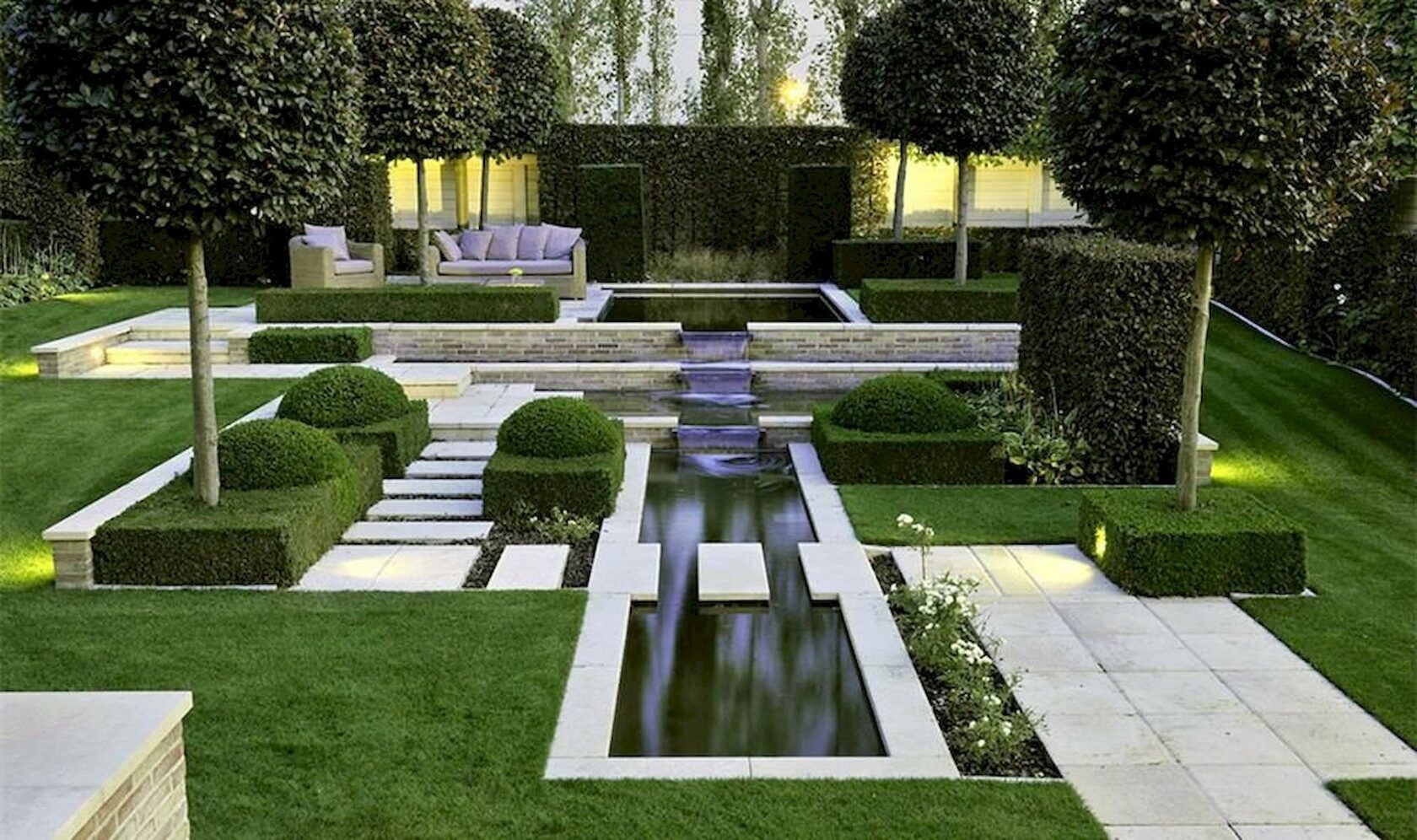
The Rule of Threes and Plant Groupings
Professional plant styling often employs the rule of threes—grouping plants in odd numbers creates more visually interesting and natural-looking arrangements. When clustering plants, vary their heights, textures, and pot styles to create dynamic compositions that feel intentional yet organic.
Place a tall plant as your anchor, a medium-sized plant for transition, and a trailing or small plant to complete the grouping. This creates visual rhythm that guides the eye naturally through your indoor jungle. Repeat this pattern throughout your home with variations to maintain cohesion without monotony.
Layering and Creating Depth
Layering is essential for achieving an authentic indoor jungle atmosphere. Use plant stands, stacked books, or side tables to create different levels. Position larger plants in the background, medium plants in the middle ground, and smaller or trailing plants in the foreground.
This layering technique creates depth perception, making spaces feel larger and more dynamic. In corner arrangements, use tallest plants at the back corner, graduating down to smaller plants as you move toward the room’s center. This draws the eye inward while maximizing your plant styling impact.
Color Coordination and Pot Selection
While plants provide color through their foliage, your pot choices significantly influence the overall aesthetic of your indoor jungle. Neutral pots in white, black, gray, or natural terracotta create a cohesive backdrop that lets the plants shine. Alternatively, choose pots in complementary colors that echo other design elements in your space.
Mix materials—ceramic, concrete, woven baskets, and wooden planters—to add textural interest while maintaining a unified color scheme. For a modern indoor jungle, use sleek geometric planters. For bohemian vibes, incorporate macramé hangers and vintage containers. Your pot choices should support your overall design vision while accommodating plant needs.
Using Vertical Space Effectively
Maximizing vertical space is crucial when learning how to style your home with plants. Install floating shelves at staggered heights to create living walls. Use wall-mounted planters, hanging planters, or ceiling hooks to suspend trailing plants at various levels.
Plant ladders offer vertical growing space while maintaining a minimal footprint, perfect for small apartments. Moss poles or trellises allow climbing plants like Monstera or pothos to grow upward, mimicking their natural growth patterns while saving floor space.
Essential Care Tips for Your Indoor Jungle
Creating an indoor jungle requires understanding basic plant care principles to keep your green companions thriving and beautiful.
Watering Wisdom
Overwatering kills more houseplants than any other factor. Most indoor plants prefer soil that dries slightly between waterings. Invest in a moisture meter to take the guesswork out of watering schedules. Generally, plants in terracotta pots dry faster than those in ceramic or plastic.
Water quality matters—tap water containing chlorine or fluoride can harm sensitive plants. Let tap water sit overnight before using it, or collect rainwater when possible. Water thoroughly until it drains from the bottom, ensuring complete soil saturation rather than frequent shallow watering. Different plants in your indoor jungle will have varying water needs. Group plants with similar requirements together to streamline your care routine and prevent over or under-watering certain varieties.
Light Requirements and Placement
Light levels in your home is fundamental to successful plant styling. South-facing windows provide the brightest light, suitable for succulents, cacti, and light-hungry tropicals. East and west-facing windows offer moderate light perfect for most houseplants. North-facing windows provide low light where only the most tolerant plants survive.
Rotate plants regularly to ensure even growth. Watch for signs of light stress—stretching stems indicate insufficient light, while burned or faded leaves suggest too much direct sun. Grow lights can supplement natural light, enabling you to create an indoor jungle even in darker spaces.
Humidity and Temperature Control
Many popular indoor jungle plants originate from tropical environments and appreciate humidity levels higher than typical homes provide. Group plants together to create micro-climates with increased humidity. Place plants on pebble trays filled with water (ensuring pots don’t sit in water) to boost moisture levels.
Humidifiers benefit both your plants and your respiratory health during dry months. Misting provides temporary humidity relief but isn’t a long-term solution. Keep your indoor jungle away from heating vents, air conditioners, and drafty windows that cause temperature and humidity fluctuations.
Fertilizing and Repotting
During growing seasons (spring and summer), feed your indoor jungle with balanced, water-soluble fertilizer every 2-4 weeks. Reduce or eliminate fertilizing during fall and winter when growth slows. Over-fertilizing causes salt buildup and root burn, so follow package instructions carefully.
Repot plants when roots circle the pot bottom or emerge from drainage holes. This typically occurs every 1-2 years for most houseplants. Choose pots only slightly larger than current ones—oversized pots retain too much moisture and can lead to root rot.
Troubleshooting Common Indoor Jungle Problems
Even experienced plant parents encounter challenges when maintaining an indoor jungle. Recognizing problems early prevents serious damage.
Pest Management
Common indoor plant pests include spider mites, mealybugs, scale, and fungus gnats. Inspect plants regularly, especially new additions that should be quarantined initially. Treat infestations with insecticidal soap, neem oil, or targeted solutions appropriate for the pest type.
Prevention is easier than treatment—maintain proper watering practices, provide adequate airflow, and keep foliage clean by wiping leaves with damp cloths. Healthy plants resist pests better than stressed ones, so maintaining optimal growing conditions is your best defense.
Yellow Leaves and Dropping Foliage
Yellow leaves typically indicate overwatering, though they can also signal natural aging, nutrient deficiency, or light issues. Check soil moisture and adjust watering accordingly. If only lower leaves yellow and drop, this usually represents normal plant maturation. Sudden leaf drop often indicates environmental shock—temperature changes, drafts, or relocation stress. Minimize moving plants once they’ve adapted to a location within your indoor jungle.
Styling Accessories and Complementary Elements
Enhance your plant styling with carefully chosen accessories that complement your indoor jungle without overwhelming it.
Plant Stands and Display Options
Stylish plant stands elevate both your plants and your design. Mid-century modern stands add retro charm, while minimalist metal stands suit contemporary spaces. Tiered plant stands maximize vertical space for multiple plants in small footprints.
Vintage ladders, repurposed stools, or stacked crates create eclectic displays that showcase your personality. Ensure any display option is stable enough to safely support your plants’ weight when wet soil is heaviest.
Decorative Mulch and Top Dressing
Top dressing improves both aesthetics and functionality in your indoor jungle. Spanish moss creates a natural forest floor appearance while helping retain soil moisture. Decorative pebbles, glass stones, or bark chips polish the look of your pots while preventing fungus gnats. Choose top dressing that complements your overall design aesthetic and serves practical purposes without compacting soil or preventing water penetration.
Creating a Sustainable Indoor Jungle
Build an environmentally conscious indoor jungle through sustainable practices that benefit both your plants and the planet.
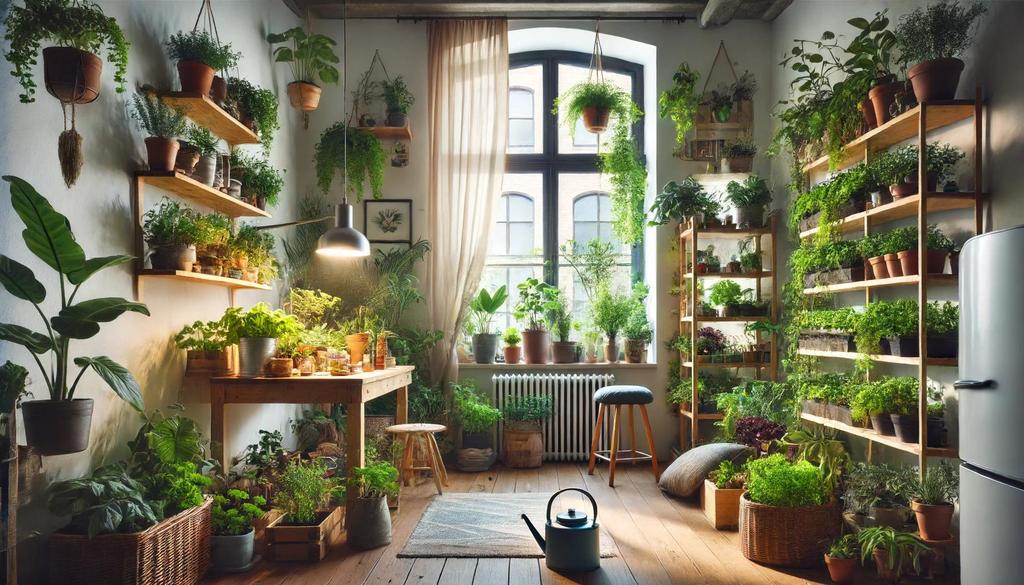
Propagation and Plant Sharing
Many houseplants propagate easily, allowing you to expand your indoor jungle without purchasing new plants. Pothos, spider plants, succulents, and snake plants root readily in water or soil. Share propagated plants with friends, building a community of plant lovers. Join local plant swap groups or online communities where enthusiasts exchange plants, pots, and growing tips. This sustainable approach reduces costs while connecting you with fellow plant parents.
Eco-Friendly Products and Practices
Choose sustainable products for your plant styling—biodegradable pots, organic fertilizers, and natural pest control methods. Collect rainwater for watering when possible, and compost dead plant material rather than discarding it.
Purchase plants from local nurseries rather than big-box stores when possible, supporting businesses that prioritize plant health and sustainable growing practices. Research companies’ environmental policies before making purchases online.
More Read: Balcony Gardening Tips for Apartment Dwellers
Conclusion
Creating an indoor jungle and mastering how to style your home with plants is a rewarding journey that transforms not just your space but your relationship with nature. Whether you start with a single statement plant or dive into a full botanical transformation, the key is choosing plants you love, understanding their needs, and arranging them in ways that reflect your personal aesthetic.
Your indoor jungle will evolve with time—plants grow, seasons change, and your confidence as a plant parent increases. Embrace this evolution, experiment with different arrangements, and don’t fear occasional failures. Every brown leaf teaches valuable lessons that make you a better plant caretaker.
The benefits of living surrounded by plants extend far beyond visual appeal. Your indoor jungle purifies air, reduces stress, sparks creativity, and creates a sanctuary within your home. As you develop your plant styling skills, you’ll discover that caring for plants becomes a meditative practice that grounds you in the present moment.
Start today by adding one new plant to your collection, rearranging existing plants with fresh eyes, or simply spending time appreciating the green companions already sharing your space. Your dream indoor jungle is waiting to grow, one leaf at a time. Let your creativity flourish alongside your plants, and watch as your home transforms into the lush, vibrant sanctuary you’ve always envisioned.
